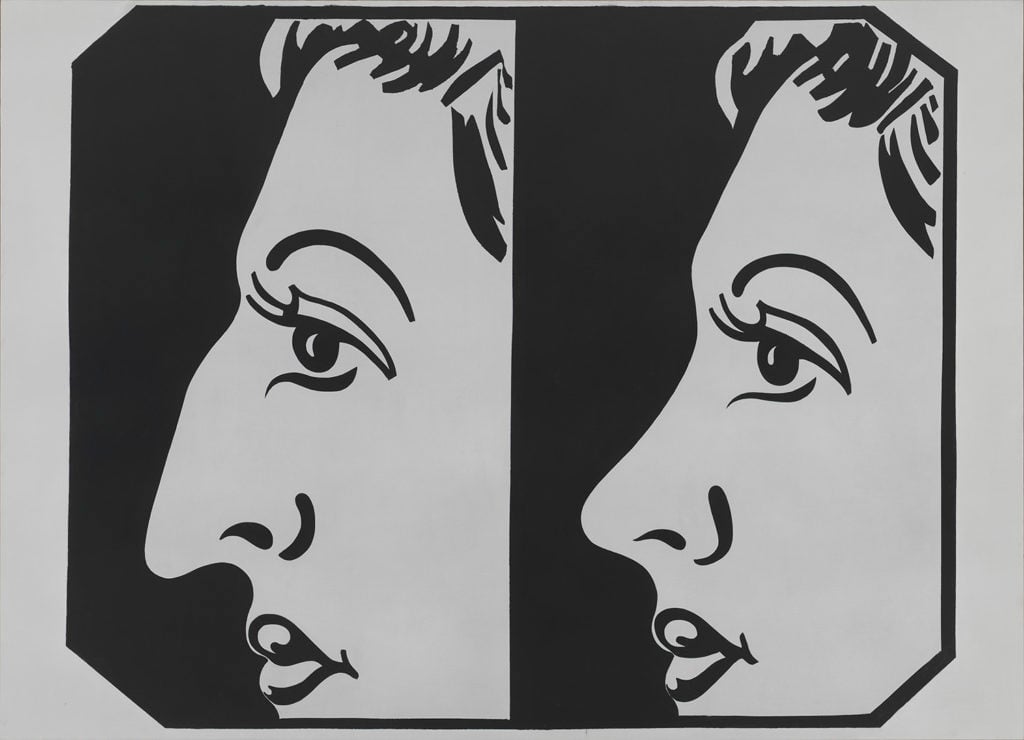Opinion
Andy Warhol’s Jewish Question
THE DAILY PIC: At the Warhol Museum, one of Warhol's "Before and After" paintings gets us asking what a hooked nose might have meant to him.

THE DAILY PIC: At the Warhol Museum, one of Warhol's "Before and After" paintings gets us asking what a hooked nose might have meant to him.

Blake Gopnik

THE DAILY PIC (#1681): This 1962 Before and After painting, in the Whitney collection, is one of Andy Warhol’s earlier Pop Art works. It’s now in the important show called “My Perfect Body,” curated by Jessica Beck at the Andy Warhol Museum in Pittsburgh. The big painting is based on a tiny ad for nose jobs that ran in the National Enquirer, and it obviously has a lot to do with Warhol’s dissatisfaction with his own bulbous nose and his disappointing – and expensive – effort to have it “sandpapered” into a better shape in 1957.
Beck’s show includes Warhol’s photostat of the original ad, and looking at it I was struck by how its “before” nose comes across as rather less hooked than the one in Warhol’s painted version. It’s hard not to read the Pop painting as having zoomed-in on the issues of Jewishness, and of standard anti-Semitic slurs, that the ad only hinted at.
In the space of this column, I can’t go into any kind of detail about Warhol’s relationship to Jews and Jewishness, other than to say that it was clearly complicated, and important. Jewish lodgers helped his family make ends meet during the Great Depression, and some mentions of that had a vaguely and casually deprecating tone – something perfectly unremarkable in the Pittsburgh of Warhol’s youth, where cultural and social interactions were built around ethnic identities and tensions. Those played out in Warhol’s elementary school and high school, which had a heavy population of Jews and Carpatho-Rusyns (like Warhol) and other ethnic groups whose kids didn’t automatically go to one of the local confessional schools. Some of Warhol’s closest childhood friends were Jewish, and you can imagine him sharing their sense of being permanent outsiders within the American mix. His college classmate and later roommate Philip Pearlstein was very important to him, as was his high-school and then college friend Eleanor Simon and her brother Sidney, who went on to be an expert on Stuart Davis, a proto-Pop artist who clearly mattered to Warhol. Other Jews were equally important in Warhol’s later career and life.
On the other hand, various records of Warhol’s conversation show him using language that casts Jewishness as exotic and maybe just faintly disreputable. (Although probably no more questionable, in Warhol’s own eyes, than his family’s “Czechoslovakian” heritage).
Pending further digging into this question, I think it’s safe to say that Warhol’s Before and After painting strikes a balance between being intrigued and even faintly amused by Jewish difference and feeling sympathy for the plight of anyone who is different. After all, Warhol knew and cared more about alterity, and the difficult quest for cultural inclusion, than most other artists you could name. (© 2016 The Andy Warhol Foundation for the Visual Arts)
For a full survey of past Daily Pics visit blakegopnik.com/archive.